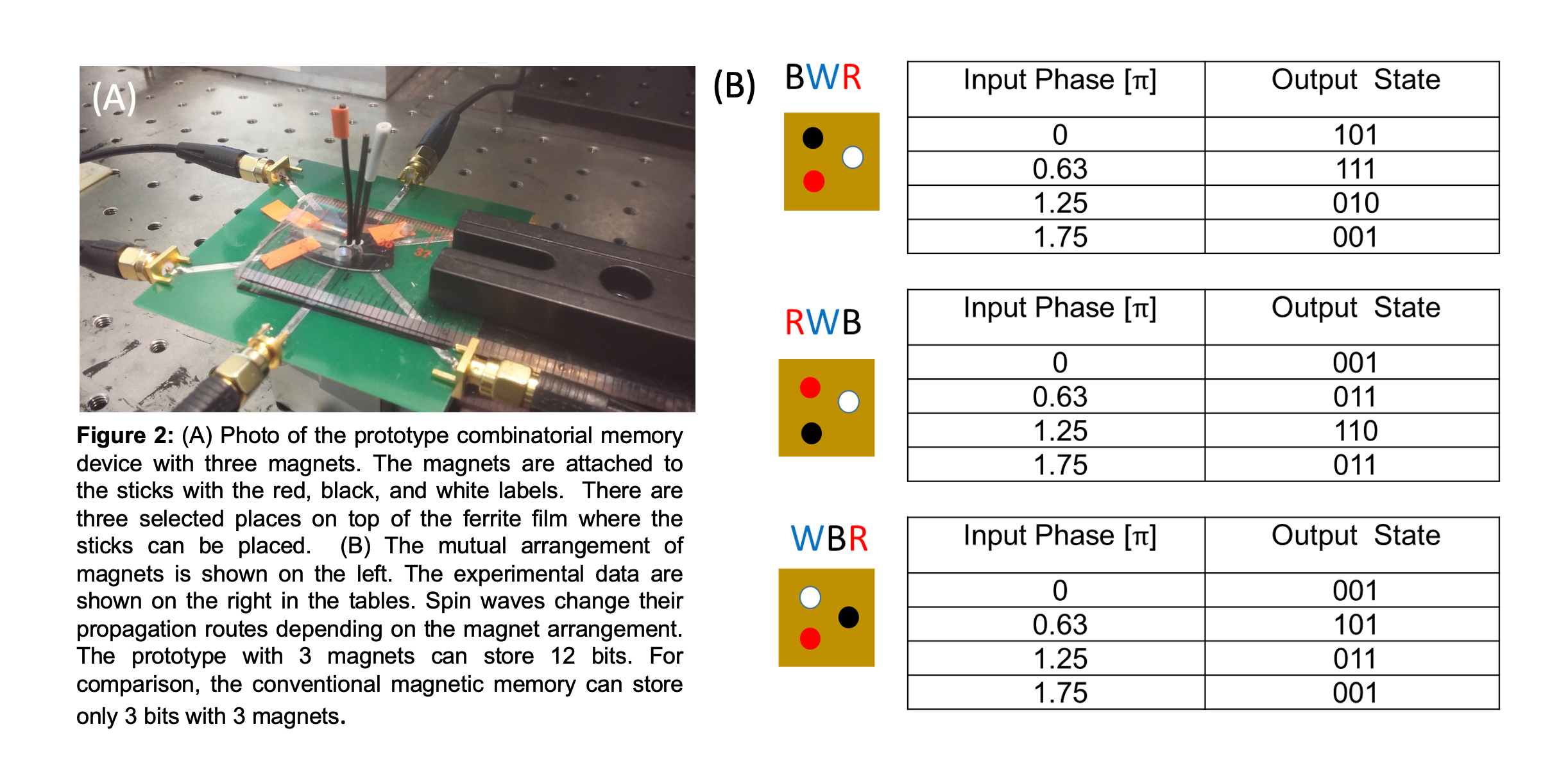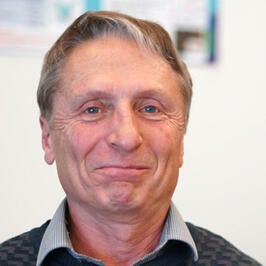
Forget saving your files to the cloud or an external drive. Imagine if your computer had enough local memory capacity to store every file and record you — and everyone who ever lived — ever created. And every book ever written. And every movie ever filmed.
New research by Department of Electrical and Computer Engineering’s Alexander Khitun and Mykhaylo Balinskyy confirms the validity of a new type of magnetic device with absolutely enormous data-storage capacity — enough to store all the information ever generated by humanity. This breakthrough is significant as information and communication technologies continue to generate vast amounts of data that far outpace conventional storage methods, said Khitun, a professional researcher and adjunct professor.
“The industry is looking for new memory with enhanced data storage capacity,” Khitun said. “The semiconductor industry, bioinformatics, and Internet of Things will benefit [from] this invention. It allows us not only to store more data per area, but also to speed up the data search procedure.”
Khitun and Balinskyy, a visiting assistant project scientist, published “Magnonic Combinatorial memory” in Nature npj Spintronics, a journal focused on spin electronics — or spintronics — the study of electrons’ spin and their magnetic properties. Their research was supported by the National Science Foundation and Intel Corporation.
Magnonics focuses on information processing and storage using currents of magnons, a particle-like quantity that is derived from a magnetic material. It is considered an emerging alternative to conventional electronics, which relies on currents of electrons. Magnonic waves can travel through different routes at the same time. “Combinatorial” refers to a research area known as combinatorial optimization, which focuses on finding the best option among a range of possibilities that is far too big to check one at a time.
In their research, they focused on increasing data storage density. In traditional models of data storage, the number of bits that can be stored on a conventional device is determined by the number of memory cells. One cell is equal to one bit of information. To increase storage capacity, the size of these cells must continually be miniaturized in order to store more data within the same amount of area and using the same amount of material.
“Our device is based on a new approach to data storage,” Khitun said.
Combinatorial memory stores information in a different way, relying on what are called “signal propagation paths in the mesh of memory cells.” As an example, Khitun points to a chessboard with its 64 black and white squares. If each square represents a memory cell, you can only store 64 bits of information on these 64 squares. At the same time, the number of paths in the mesh is much larger compared to the number of squares. For example, the number of paths from the left-hand bottom corner of the board to the right-hand top corner of the board is astronomically large — about 1042. The total number of paths is much larger if we consider all paths from any square (or combination of squares) on the left side to a square (or combination of squares) on the right side.
“Storing information in the paths is fundamentally more efficient compared to conventional memory devices storing information in the cells,” Khitun said. “The advantage increases with the size of the mesh of the combinatorial device. The more paths we have, the more bits we can store.”
For their proof-of-concept experiments, they built a magnonic combinatorial device with an active ring circuit combining magnetic and electric parts. It has demonstrated the ability to store 12 bits of information in the device with just three magnets compared to 3 bits in the conventional device with the same number of magnets.
The global amount of data will grow to about 175 zettabytes by 2025, according to the International Data Corporation, a provider of market intelligence and advisory services to the telecommunications and information and consumer technology industries. One zettabye is equal to a trillion gigabytes or 1021 bytes.
At this rate, manufacturers of flash-memory devices would need approximately 109 kilograms of silicon wafers — used to make semiconductive memory chips — to keep up with storage demands. The problem is, there isn’t enough silicon on Earth to make enough devices to store this ever-increasing torrent of data, Khitun added. The total projected supply of silicon wafers is between 107 and 108 kilograms.
In their paper, Khitun and Balinskyy describe their experimental data and propose a device using a circuit of 100x100 magnets — which would have the capacity to store all the information that humanity has ever generated. For comparison, the information contained within an average movie is about 2 gigabytes, the information contained in an average book is about 5 megabytes, and the total amount of information contained within the human genome is approximately 200 gigabytes of information. Khitun’s and Balinskyy’s device — which could be developed to be the size of a typical flash drive — would have the capacity to store more than 1050 bits of information.
Devices with an even greater capacity — using a circuit of 500x500 magnets, for example — are theoretically and practically feasible, Khitun said. A device using an array of 10x10 magnets could be developed and ready for market within three years.
The groundbreaking work is not without its share of challenges, he said. Finding the right combination of memory magnets to control signal paths is difficult. Nevertheless, the proposed device may pave the way towards the development of “unprecedented storage capacity.”
Header image of digital illustration used courtesy of Norkus (Attribution-NonCommercial 4.0 International)


